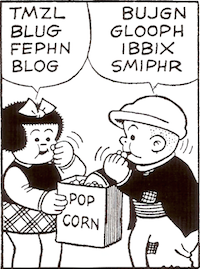
[“New Year Revelers Crowd the Hotels: Largest Throngs in Years Entertained by Costly and Elaborate Programs.” The New York Times, January 1, 1916.]
Bagpipes, auto horns, sirens, fez horns, accordeons, pipes: 1915 knew how to make some noise. But the “fez horn” has me stumped. My best guess is that this term (which appears nowhere else in the Times ) is a bit of awkwardly inventive journalese for a shofar:
Rabbi Isaac ben Jacob Alfasi, a well-known halakhic authority whose life spanned the majority of the eleventh century, blew the shofar on the Sabbath in Fez, Morocco, when it coincided with Rosh Hashanah. He did so despite the fact that this practice was approved only for the Temple in Jerusalem, with a few notable exceptions.Or perhaps a fez horn is merely a party hat that doubles as a noisemaker. But only a shofar would be able to go up against bagpipes and auto horns and such. (And only when in the hands of a skilled player.)
Roberta Rosenthal Kwall, The Myth of the Cultural Jew: Culture and Law in Jewish Tradition (New York: Oxford University Press, 2015).
I didn’t plan to go down a rabbit hole when I spotted this Times article. But now that I’m back: Happy New Year.


comments: 3
I'm amused that they feared the war effort would cut off the supply of bagpipes.
I think it's amusing that the management thought that the supply of party favors and noise-makers would be interrupted by the war. That's not what one would normally think of as war matériel, but perhaps the issue was the gunpowder inside them.
Hard to know what they were thinking in 1915: the war plays such an odd role in this paragraph. Other New Year’s Eve articles suggest that there had been great hope, for naught, that the war would end by the end of 1915.
Post a Comment